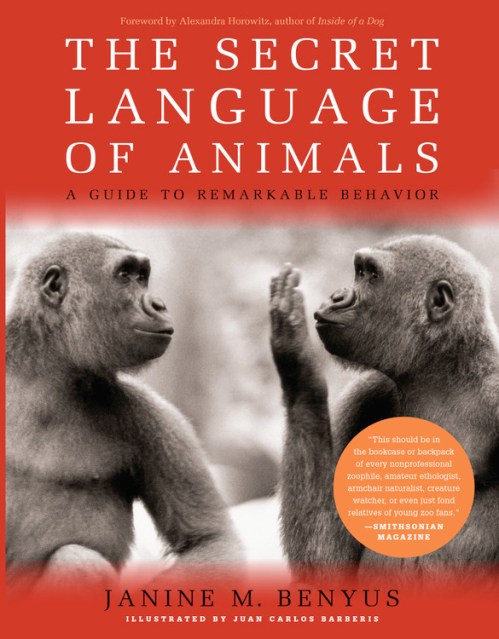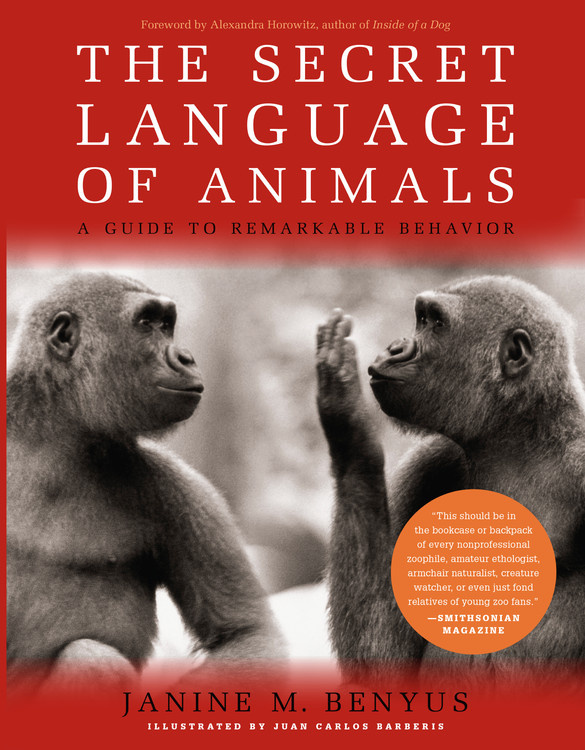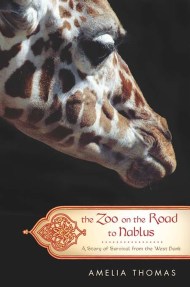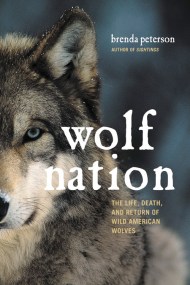Promotion
Use code CYBER2024 for 30% off sitewide + free shipping over $30
By clicking “Accept,” you agree to the use of cookies and similar technologies on your device as set forth in our Cookie Policy and our Privacy Policy. Please note that certain cookies are essential for this website to function properly and do not require user consent to be deployed.
Secret Language of Animals
A Guide to Remarkable Behavior
Contributors
Illustrated by Juan Carlos Barberis
Foreword by Alexandra Horowitz
Formats and Prices
Price
$22.95Price
$27.45 CADFormat
Format:
- Trade Paperback $22.95 $27.45 CAD
- ebook $12.99 $15.99 CAD
This item is a preorder. Your payment method will be charged immediately, and the product is expected to ship on or around April 15, 2014. This date is subject to change due to shipping delays beyond our control.
Also available from:
In The Secret Language of Animals, biologist Janine Benyus takes us inside the animal kingdom and shows us the whys and the hows behind the distinctive behavior of creatures great and small in their natural environments.
Divided geographically into five sections-Africa, Asia, North America, the oceans, and the poles-the book examines and describes the behavior, body language, and patterns of communication of 20 different animals: the gorilla, lion, African elephant, plains zebra, black rhinoceros, giraffe, ostrich, greater flamingo, Nile crocodile, giant panda, peacock, Komodo monitor, bottlenose dolphin, California sea lion, gray wolf, bald eagle, sandhill crane, beluga whale, polar bear, and Adélie penguin.
For each animal, Benyus describes and explains basic behaviors (locomotion, feeding, drinking, bathing, grooming, sleeping), communication behavior (greeting, social play, group defense, conflict, aggression/submission, fighting, courtship, copulation), and parenting behavior (birth, care and feeding, teaching, communal care).
The book is illustrated throughout with tender yet precise line drawings that beckon us to the animals and vividly capture everything from changing facial expressions to nurturing postures to playful and aggressive interactions. The text, too, is both intimate and informative, allowing for a deep connection with, and a great admiration for, each one of the animals.
Genre:
-
Nature writer Benyus (Biomimicry: Innovation Inspired by Nature, 1997, etc.) defends the value of zoos even though scarcely 10 percent meet the standard for accreditation by the American Association of Zoological Parks and Aquariums. "Though captive breeding is a number one priority at many zoos," writes the author, "it is not always obvious to the casual visitor." Zoos also play an important role in educating children about the need to protect and nurture wildlife. Benyus' aim in this update (the book was originally published in 1998) is to guide young and old visitors in better understanding the behaviors of the animals on view. To this end, she provides snapshots of their behaviors in the wild, organized geographically and by species, and how this translates to the protected environment of a nature park?the proper conception of a well-run zoo. "If you haven't been to a zoo in several years, you're in for a wild surprise?.[t]hey've sprung the cages and turned the animals loose in startling simulations of their home habitats," she writes. In a properly administered zoo, solitary animals no longer exhibit stereotypical behavior. "Besides being more at home, the animals are also in better company," writes Benyus. "No longer the lone representative of their species, they now romp in herds and pods, troops and bevies." From African gorillas and lions to peacocks, North American wolves and eagles, Arctic polar bears and whales, the author covers the typical behaviors of different species, their feeding, locomotion, grooming, vocalizations, gestures and courtship rituals, social organization and raising of young. Most of us will never go on a safari, but with Benyus' guidance, supplemented with more than 200 charming illustrations, a visit to the zoo can be educational and provide thrills galore?and we can play an important role by observing that the animals are being properly treated.
-
A user-friendly reference volume densely packed with facts, theories and anecdotes? Solid information, great fun.
- On Sale
- Apr 15, 2014
- Page Count
- 480 pages
- Publisher
- Black Dog & Leventhal
- ISBN-13
- 9781579129682
Newsletter Signup
By clicking ‘Sign Up,’ I acknowledge that I have read and agree to Hachette Book Group’s Privacy Policy and Terms of Use







